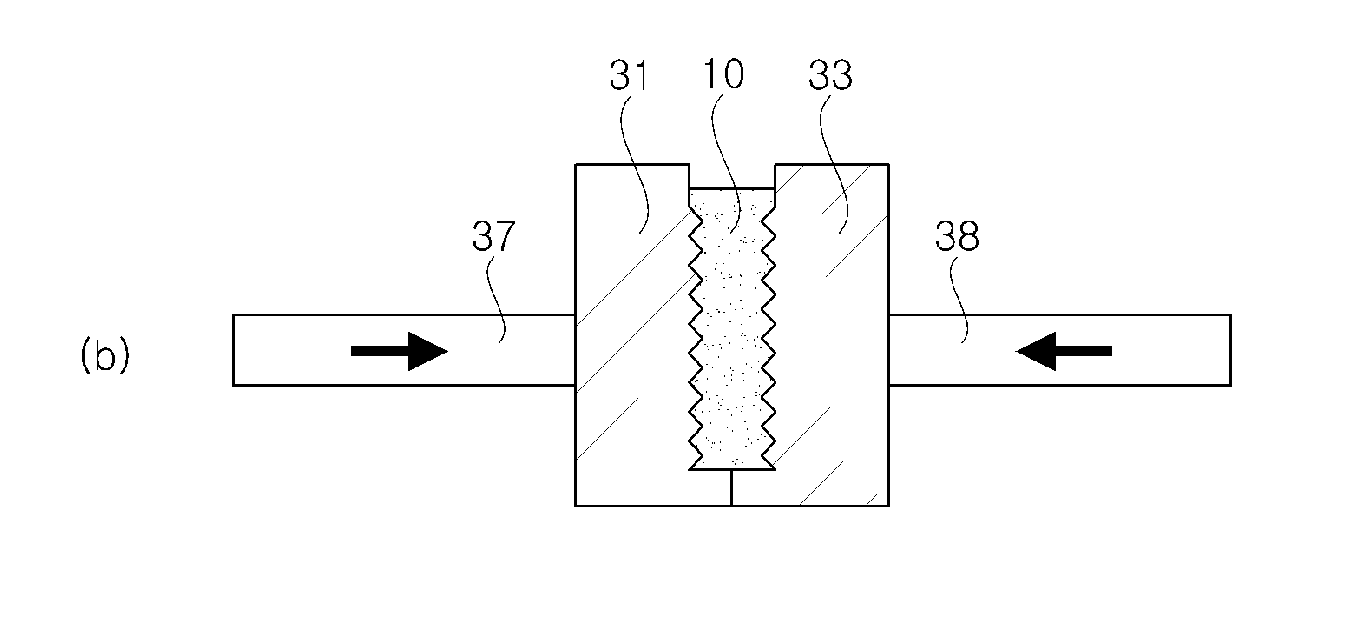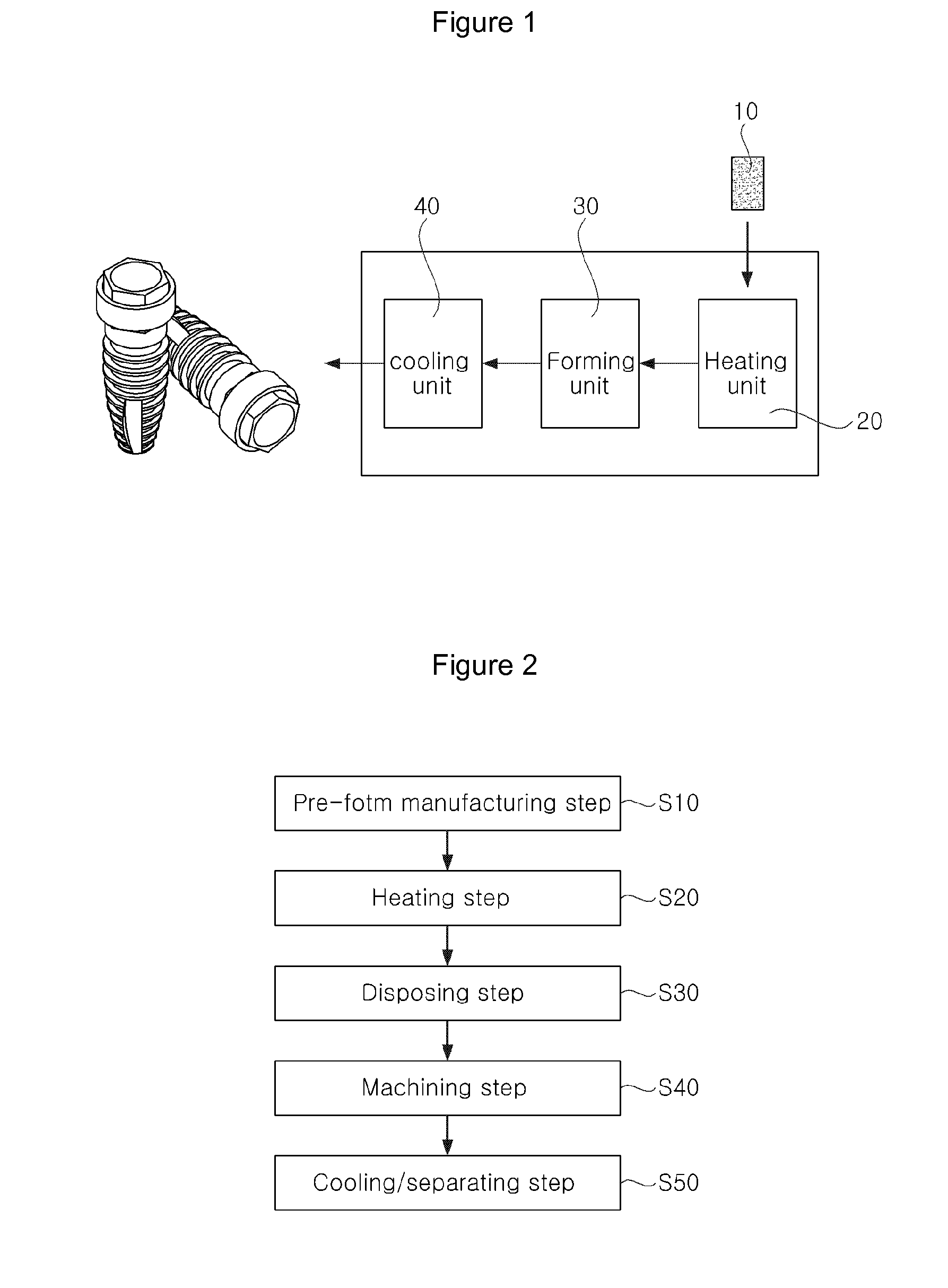Apparatus and method for manufacturing implant using amorphous alloy
- Summary
- Abstract
- Description
- Claims
- Application Information
AI Technical Summary
Benefits of technology
Problems solved by technology
Method used
Image
Examples
Embodiment Construction
[0037]FIG. 1 is a diagram showing an apparatus for manufacturing an implant using an amorphous alloy according to an embodiment of the present invention. FIG. 2 is a flowchart showing a method for manufacturing an implant using an amorphous alloy according to an embodiment of the present invention. FIG. 3 shows illustrative views of a process of manufacturing an implant having a screw thread on an outer peripheral surface thereof by using the apparatus for manufacturing an implant according to the embodiment of the present invention. FIG. 4 shows illustrative views of a process of manufacturing an implant having screw threads on inner and outer peripheral surfaces thereof by using the apparatus for manufacturing an implant according to the embodiment of the present invention. FIG. 5 is a graph showing a thermoplastic forming process according to an embodiment of the present invention.
[0038]The present invention relates to an apparatus and a method for manufacturing an implant in a s...
PUM
| Property | Measurement | Unit |
|---|---|---|
| Thermal expansion coefficient | aaaaa | aaaaa |
Abstract
Description
Claims
Application Information
 Login to View More
Login to View More - R&D
- Intellectual Property
- Life Sciences
- Materials
- Tech Scout
- Unparalleled Data Quality
- Higher Quality Content
- 60% Fewer Hallucinations
Browse by: Latest US Patents, China's latest patents, Technical Efficacy Thesaurus, Application Domain, Technology Topic, Popular Technical Reports.
© 2025 PatSnap. All rights reserved.Legal|Privacy policy|Modern Slavery Act Transparency Statement|Sitemap|About US| Contact US: help@patsnap.com



